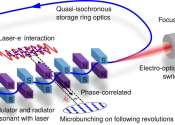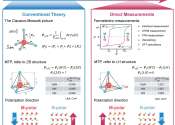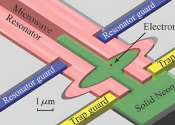New method for generating monochromatic light in storage rings
When ultrafast electrons are deflected, they emit light—synchrotron radiation. This is used in so-called storage rings in which magnets force the particles onto a closed path. This light is longitudinally incoherent and ...









